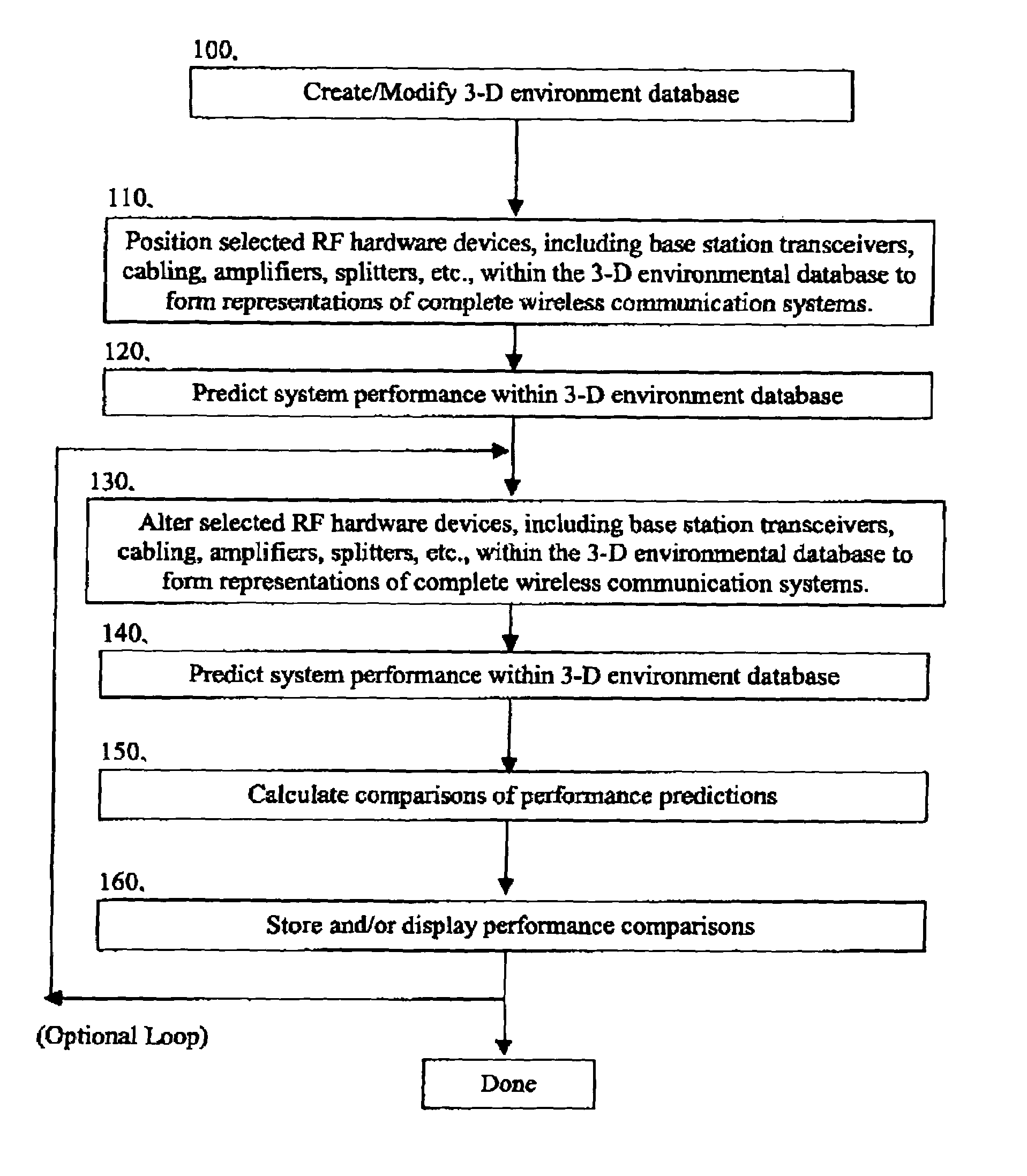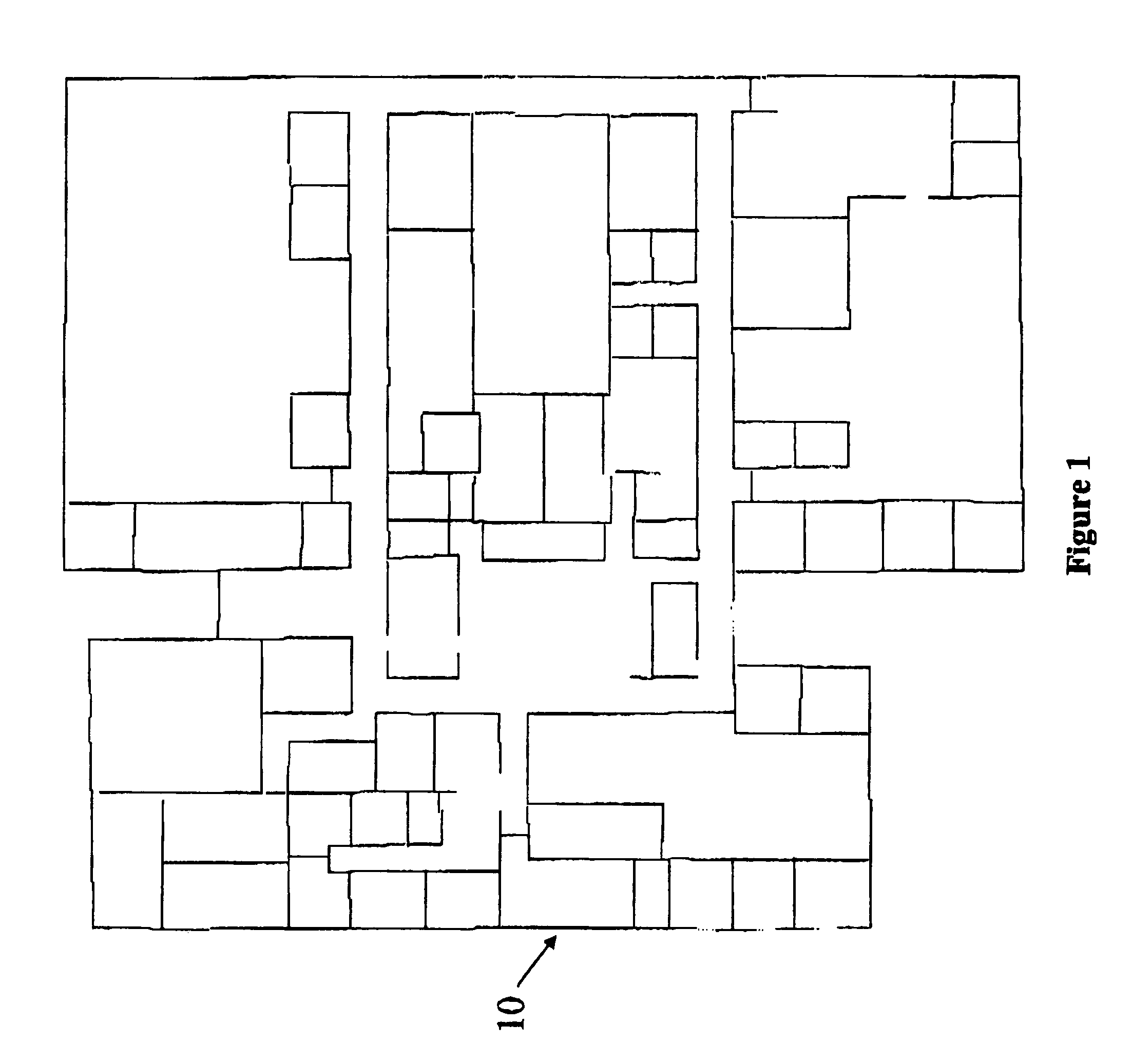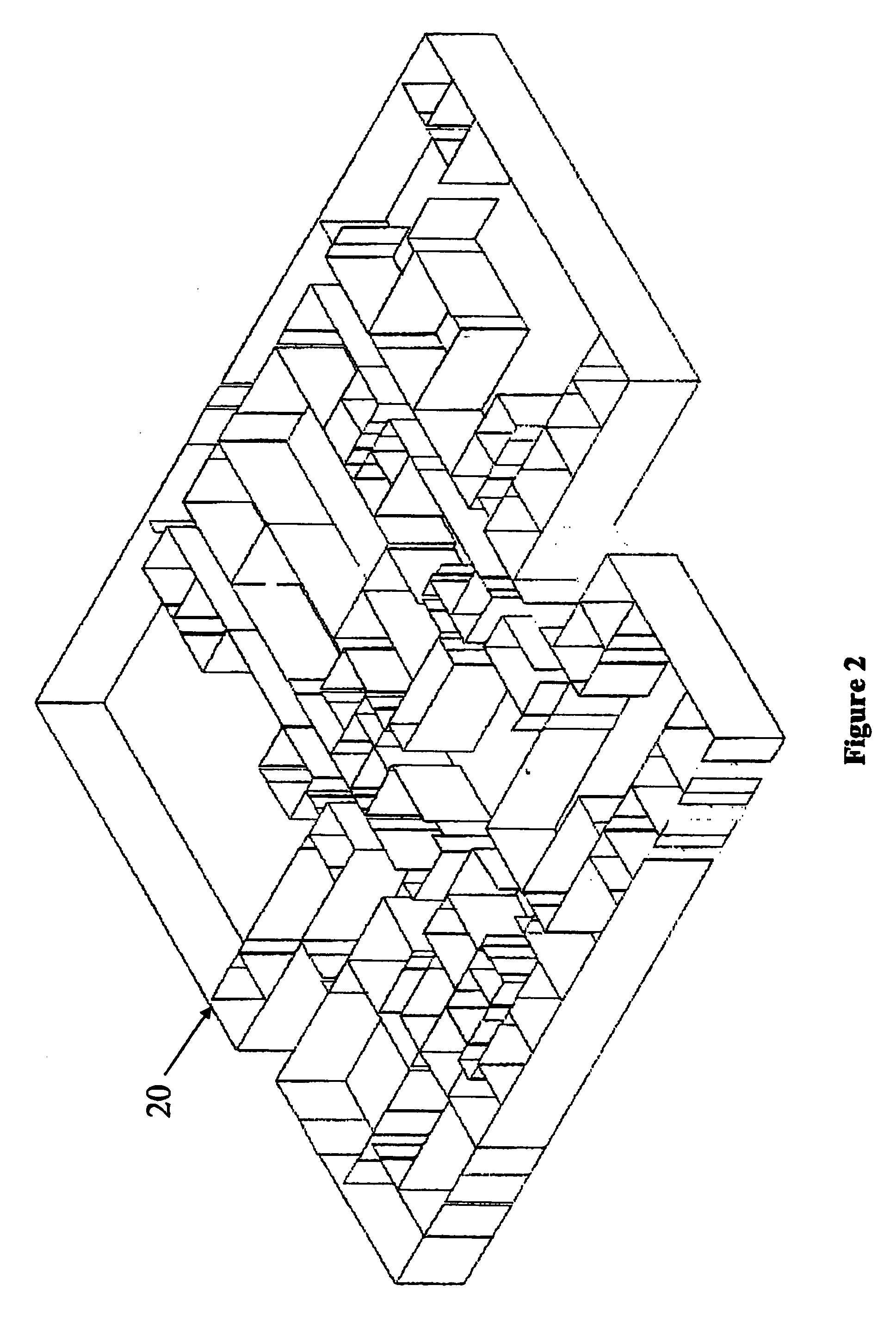System and method for efficiently visualizing and comparing communication network system performance
a communication network and performance analysis technology, applied in the field of management systems for the design of wireless and wired communication systems, can solve the problems of not reporting a comprehensive method for visualizing and analyzing wireless system performance, the workload of wireless system design engineers and technicians to deploy such systems is increasing sharply, and the display of predicted performance results is not easy. to achieve the effect of facilitating the display of comparisons and displaying predicted performance results
- Summary
- Abstract
- Description
- Claims
- Application Information
AI Technical Summary
Benefits of technology
Problems solved by technology
Method used
Image
Examples
Embodiment Construction
[0069]Using the present method, it is now possible to assess the performance of a communication system to a much higher level of precision than previously possible. The present method is a significant advance over the prior art in the display of predicted performance of communication systems. The design of communication systems is often a very complex and arduous task, with a considerable amount of effort required to simply analyze the results of system performance.
[0070]In the prior art, only a single performance prediction result could be analyzed at once. That is, having designed a communications system, there was no direct way to quickly visualize and compare advantages between having a hardware component in one communications network layout or another. In the present invention, a system is described where two or more predictions may be compared to analyze advantages or disadvantages between designs, models, or other factors.
[0071]The present invention also allows for a measurem...
PUM
 Login to View More
Login to View More Abstract
Description
Claims
Application Information
 Login to View More
Login to View More - R&D
- Intellectual Property
- Life Sciences
- Materials
- Tech Scout
- Unparalleled Data Quality
- Higher Quality Content
- 60% Fewer Hallucinations
Browse by: Latest US Patents, China's latest patents, Technical Efficacy Thesaurus, Application Domain, Technology Topic, Popular Technical Reports.
© 2025 PatSnap. All rights reserved.Legal|Privacy policy|Modern Slavery Act Transparency Statement|Sitemap|About US| Contact US: help@patsnap.com



